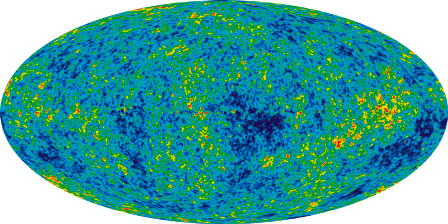These following facts about the Big Bang Theory might probably give you much explanation about it. The Big Bang Theory is the prevailing cosmological model for the early development of the universe. The key idea is that the universe is expanding. Consequently, the universe was denser and hotter in the past. Moreover, the Big Bang model suggests that at some moment all matter in the universe was contained in a single point, which is considered the beginning of the universe. Modern measurements place this moment at approximately 13.8 billion years ago, which is thus considered the age of the universe. Furthermore, to get you to know more about this theory, below are some facts about the Big Bang Theory you might be interested in.
Facts about the Big Bang Theory 1: Offering
The Big Bang theory offers a comprehensive explanation for a broad range of observed phenomena, including the abundance of light elements, the cosmic microwave backgroung, large scale structure and Hubble’s Law. As the distance between galaxies increases today, in the past galaxies were closer together.
Facts about the Big Bang Theory 2: Laws of Nature
The known laws of nature can be used to calculate the characteristics of the universe in detail back in time to extreme densities and temperature densities and temperatures. While large particle accelerators can replicate such conditions, resulting in confirmation and refinement of the details of the Big Bang model, these accelerators can only probe so far into high energy regimes.
Facts about the Big Bang Theory 3: Cosmic Microwave Background Radiation
While the scientific community was once divided between supporters of two different expanding universe theories—the Big Bang and the Steady State theory, observational confirmation of the Big Bang scenario came with the discovery of the cosmic microwave background radiation.
Facts about the Big Bang Theory 4: Singularity
Extrapolation of the expansion of the universe backwards in time using general relativity yields an infinite density and temperature at a finite time in the past.This singularity signals the breakdown of general relativity. How closely we can extrapolate towards the singularity is debated—certainly no closer than the end of the Planck epoch. This singularity is sometimes called “the Big Bang”,but the term can also refer to the early hot, dense phase itself, which can be considered the “birth” of our universe.
Facts about the Big Bang Theory 5: Etymology
English astronomer Fred Hoyle is credited with coining the term “Big Bang” during a 1949 BBC radio broadcast. It is popularly reported that Hoyle, who favored an alternative “steady state” cosmological model, intended this to be pejorative, but Hoyle explicitly denied this and said it was just a striking image meant to highlight the difference between the two models.
Facts about the Big Bang Theory 6: Development
The Big Bang theory developed from observations of the structure of the universe and from theoretical considerations. In 1912 Vesto Slipher measured the first Doppler shift of a “spiral nebula”, and soon discovered that almost all such nebulae were receding from Earth.
Facts about the Big Bang Theory 7: Observational Evidence
The earliest and most direct observational evidence of the validity of the theory are the expansion of the universe according to Hubble’s law, discovery and measurement of the cosmic microwave background and the relative abundances of light elements produced by Big Bang nucleosynthesis. More recent evidence includes observations of galaxy formation and evolution, and the distribution of large-scale cosmic structures.
Facts about the Big Bang Theory 8: Problems
There are generally considered to be three outstanding problems with the Big Bang theory: the horizon problem, the flatness problem and the magnetic monopole problem. The most common answer to these problems is inflationary theory; however, since this creates new problems, other options have been proposed, such as the Wyel curvature hypothesis.
Facts about the Big Bang Theory 9: Big Crunch
Before observations of dark energy, cosmologists considered two scenarios for the future of the universe. If the mass density of the universe were greater than the critical density, then the universe would reach a maximum size and then begin to collapse. It would become denser and hotter again, ending with a state similar to that in which it started—a Big Crunch.
Facts about the Big Bang Theory 10: Speculative Physics beyond the Big Bang Theory
While the Big Bang model is well established in cosmology, it is likely to be refined. The equations of classical general relativity indicate a singularity at the origin of cosmic time, although this conclusion depends on several assumptions and the equations break down at any time before the universe reached the Planck temperature. A correct treatment of quantum gravity may avoid the would-be singularity.
Hope you would find those Big Bang Theory facts interesting, useful, and helpful for your additional reading.










 www.PortlandPayday.Loans
www.PortlandPayday.Loans